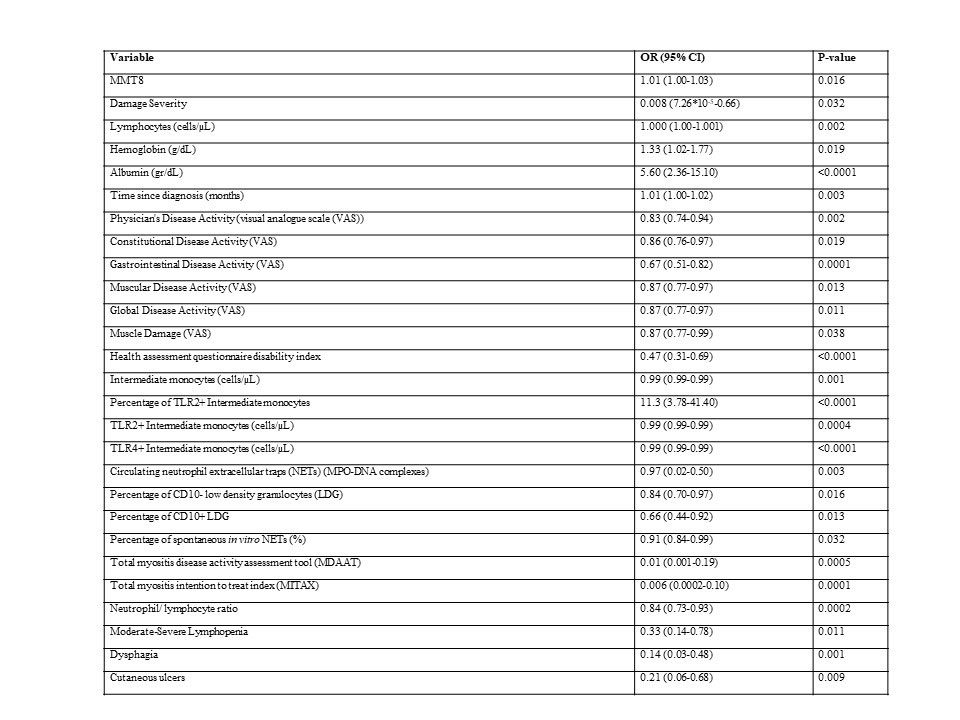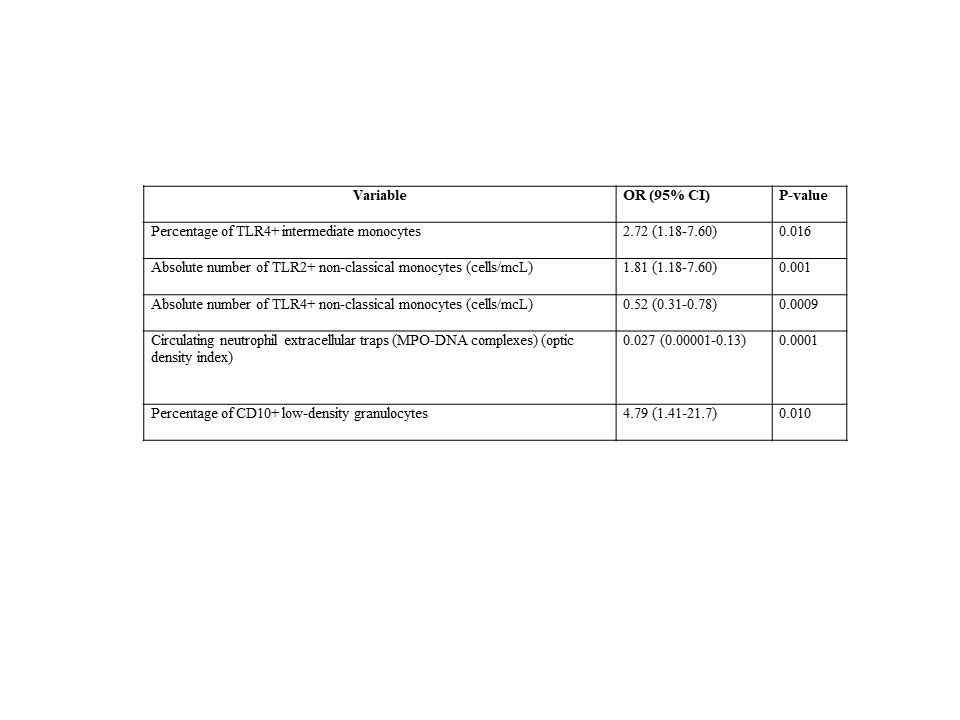Session Information
Session Type: Poster Session A
Session Time: 1:00PM-3:00PM
Background/Purpose: Risk factors associated with the development of infections in patients with idiopathic inflammatory myopathies (IIM) have not been fully addressed, particularly those related to innate immune responses. We aimed to assess the clinical and immunological features associated with the development of infections (severe and recurrent) in a cohort of IIM patients.
Methods: A cohort of 119 adult patients with diagnosis of IIM according to the Bohan and Peter or the ACR/EULAR 2017 classification criteria were included from 2016 to 2020 at a tertiary care center. Activity and damage were assessed according to the International Myositis Assessment and Clinical Studies Groups (IMACS) core set measures. Innate immunity parameters were measured by multiparametric flow cytometry from peripheral blood mononuclear cells, including quantification of cytokines. Circulating neutrophil extracellular traps (NETs) were measured by ELISA and NET induction by immunofluorescence and confocal microscopy.
Results: Thirty six of our patients (30%) developed an infection of whom 24 had severe infections (20%). The 3 more prevalent sites of infection were lung (31%), skin and soft tissues (27%) and gastrointestinal (14%). The majority were women (90, 75.6%) with a median age of 46 IQR 37-57) years and the most frequent IIM subtype was dermatomyositis (69.74%). Most patients were under immunosuppressive therapy, 66 patients were receiving prednisone (55.5%), 47 (39.5%) methotrexate and 38 (31.9%) azathioprine. Death occurred in 5 patients (4.2%) all due to infectious causes. We found greater activity, damage and disability in patients with severe and recurrent infections. Several clinical and immunological features were associated with infection in IIM patients in univariate analysis (see Table 1). After multivariable analysis, the percentage of TLR4+ intermediate monocytes, absolute number of TLR2+ non-classical monocytes and percentage of CD10+ low-density granulocytes were risk factors for the development of infection. Interestingly, the absolute number of TLR4+ non-classical monocytes and amount of circulating NETs (MPO-DNA complexes) were associated with lower risk of infection in our cohort, as depicted in Table 2.
Conclusion: Our data supports the pivotal role of innate immunity parameters in the pathophysiology of infection development in IIM patients. To our knowledge this is the first work to report the association between this novel innate immunity features and infection risk in IIM patients, regardless of immunnosuppressive therapy and disease activity.
To cite this abstract in AMA style:
Gómez-Martín D, torres-Ruiz j, Tovar-Méndez v, Cassiano-Quezada F, Carrillo-Vázquez D, Pérez-Fragoso A, Mejía-Rodríguez N, Juárez-Vega g. Novel Innate Immunity Predictors of Infections in Idiopathic Inflammatory Myopathies Patients: A Cohort Study [abstract]. Arthritis Rheumatol. 2022; 74 (suppl 9). https://acrabstracts.org/abstract/novel-innate-immunity-predictors-of-infections-in-idiopathic-inflammatory-myopathies-patients-a-cohort-study/. Accessed .« Back to ACR Convergence 2022
ACR Meeting Abstracts - https://acrabstracts.org/abstract/novel-innate-immunity-predictors-of-infections-in-idiopathic-inflammatory-myopathies-patients-a-cohort-study/


